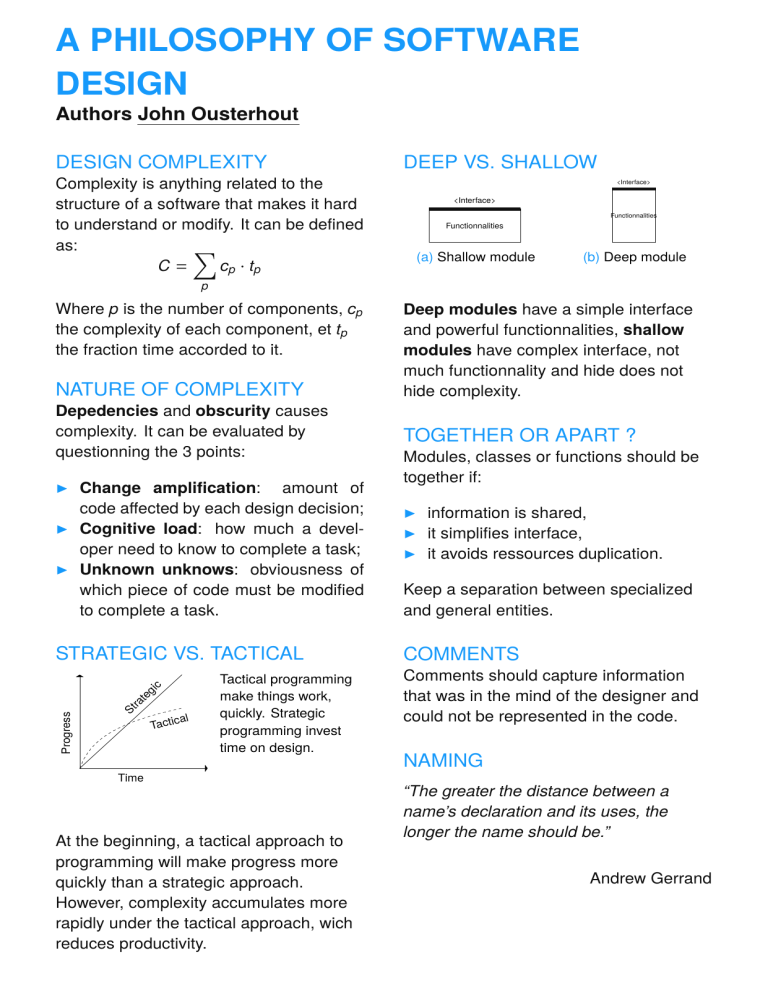
A PHILOSOPHY OF SOFTWARE DESIGN Authors John Ousterhout DESIGN COMPLEXITY Complexity is anything related to the structure of a software that makes it hard to understand or modify. It can be defined as: Õ c p · tp C= DEEP VS. SHALLOW <Interface> <Interface> Functionnalities Functionnalities (a) Shallow module (b) Deep module p Where p is the number of components, cp the complexity of each component, et tp the fraction time accorded to it. NATURE OF COMPLEXITY Depedencies and obscurity causes complexity. It can be evaluated by questionning the 3 points: I Change amplification: amount of code affected by each design decision; I Cognitive load: how much a developer need to know to complete a task; I Unknown unknows: obviousness of which piece of code must be modified to complete a task. St ra Progress te g ic STRATEGIC VS. TACTICAL al Tactic Tactical programming make things work, quickly. Strategic programming invest time on design. Deep modules have a simple interface and powerful functionnalities, shallow modules have complex interface, not much functionnality and hide does not hide complexity. TOGETHER OR APART ? Modules, classes or functions should be together if: I information is shared, I it simplifies interface, I it avoids ressources duplication. Keep a separation between specialized and general entities. COMMENTS Comments should capture information that was in the mind of the designer and could not be represented in the code. NAMING Time At the beginning, a tactical approach to programming will make progress more quickly than a strategic approach. However, complexity accumulates more rapidly under the tactical approach, wich reduces productivity. “The greater the distance between a name’s declaration and its uses, the longer the name should be.” Andrew Gerrand






